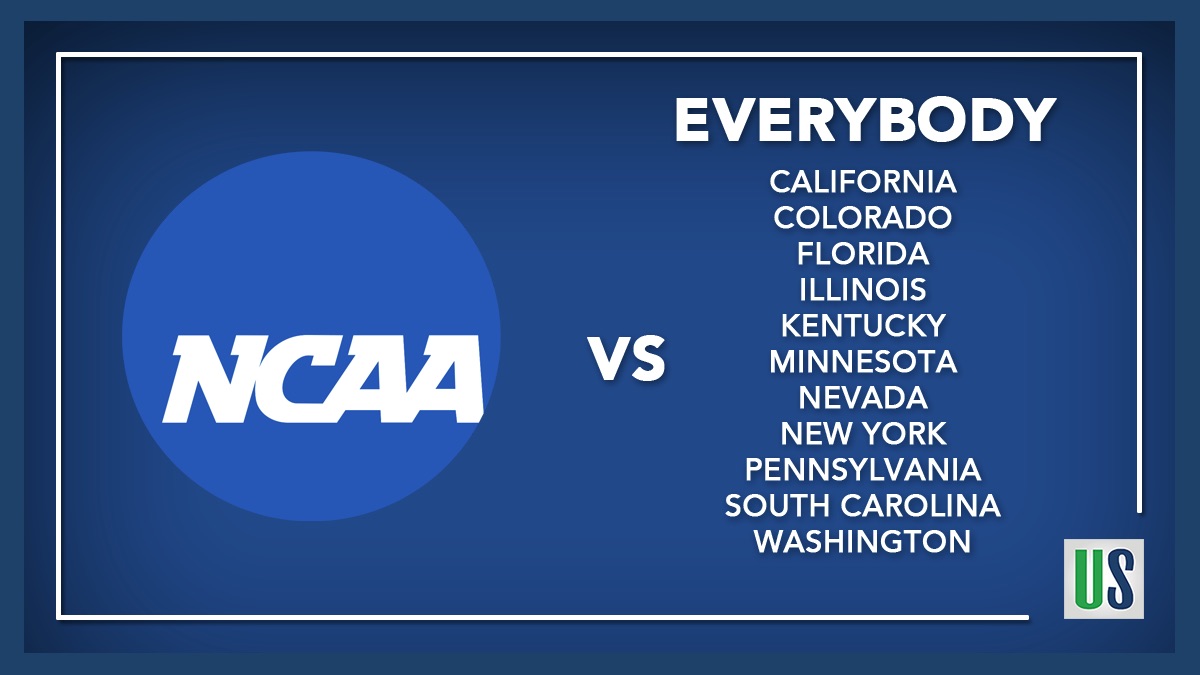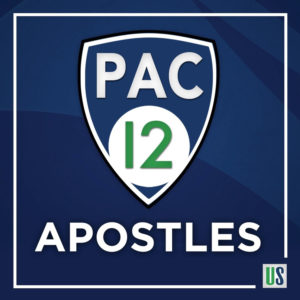
On Tuesday, the NCAA’s working group released its decision on the college athlete name, image, and likeness (NIL) compensation issue. Or did they? All of the headlines immediately read that the NCAA allows college athlete NIL compensation. At first glance, the NCAA’s statement would lead one to believe that they did just that. The statement read that “the NCAA’s top governing board voted unanimously to permit students participating in athletics the opportunity to benefit from the use of their name, image, and likeness.” However, when looking a bit closer it becomes very apparent that the NCAA never used the word compensation in the context of allowing NIL payments. The NCAA danced around the compensation issue without ever calling it compensation.
In fact, the NCAA was not clear at all about how they plan to address the college athlete NIL compensation issue. They essentially addressed the issue without truly addressing the issue. Their statement is riddled with unclear ambiguous language that essentially renders the NCAA’s true stance on the issue unclear. The NCAA’s lack of clarity should come as no surprise. After all the NCAA is only addressing NIL compensation after being forced to do so.
The NCAA was Strong-Armed into Addressing College Athlete NIL Compensation
2019 has been a volatile year for the NCAA. State and federal lawmakers have become increasingly vocal about the injustices that plague the college athletics system. Several lawmakers introduced legislation to remedy those injustices. In January, Washington State Senator, Drew Stokesbary, introduced legislation to allow college athletes in Washington state to profit from their NIL. Soon after, Congressman Mark Walker introduced the Student-Athlete Equity Act. Under the Student-Athlete Equity Act, the NCAA would lose its tax-exempt status if it does not allow college athlete NIL compensation. While these bills were being introduced, lawmakers in California were debating the Fair Pay to Play Act. All of this led the NCAA to create a working group to address the NIL compensation issues.
However, the working group did not work fast enough for California. California Governor Gavin Newsom signed the Fair Pay to Play Act into law. Under the law, college athletes in California will be allowed to profit from their name, image, and likeness and sign with agents starting in 2023. In spite of the NCAA’s efforts to thwart the Fair Pay to Play Act, it still became law. As a result, the NCAA’s working group had no choice but to acknowledge the need to “modernize” their rules in favor of college athlete NIL compensation. The NCAA was forced to either move towards NIL compensation or to at the very least appear to be moving towards NIL compensation. It seems as though the NCAA has chosen to appear to be moving forward with college athlete NIL compensation.
The NCAA Has Chosen to Give the Appearance of Moving Towards College Athlete NIL Compensation Instead of Truly Moving Towards it
While the NCAA has everyone saying that they have decided to allow college athlete NIL compensation, that is not exactly true. In fact, the NCAA never used the word compensation in that context. The NCAA voted to allow college athletes to “benefit” from the use of their name, image, and likeness, not to be compensated. It is not clear what “benefit” actually means. What kind of “benefit” will the NCAA allow? How are NIL benefits different from NIL compensation? However, what the NCAA did make clear is that the “benefit” will be done “in a manner consistent with the current collegiate model.” In true NCAA fashion, the NCAA spared no expense in making it clear that they are dedicated to preserving as much of the current collegiate model as possible. In fact, the NCAA set out a list of guidelines that are dedicated to doing just that.
The NCAA’s Rule Modernization Guidelines
As a part of its effort to allow college athletes to “benefit” from their NIL, the NCAA has urged each division to consider modernization of its bylaws and policies. To help each division with doing that, the working group created a set of guidelines for each division to consider. However, those principles and guidelines seem to be more about ensuring that the divisions create bylaws that maintain the NCAA’s commitment to amateurism.
For example, the NCAA has urged its divisions to amend their rules so that athletes receive similar treatment as other students. However, the guidelines provide a caveat that will allow athletes to be treated differently when there is a compelling reason for doing so. However, in true NCAA fashion, there is no clarity on what is a permissible compelling reason for different treatment. Additionally, the guidelines require that the amended bylaws maintain a “clear distinction between collegiate and professional opportunities.” This is clear amateurism perservation language.
The NCAA also urged that the bylaws be amended so that it is clear that “compensation for athletic performance or participation is impermissible.” In fact, that is the only context in which the NCAA made reference to compensation. They mentioned it to reiterate that compensation related to athletic performance is not permissible. Furthermore, the NCAA instructed that the bylaws be amended with the caveat that “student-athletes are students first and not employees of the university.” Again, their true focus is on preserving amateurism.
The NCAA’s Statement is not the Earth Shattering Development it was Made out to be
While the NCAA’s statement is noteworthy, it is not the groundbreaking development it was made out to be. It is noteworthy because the NCAA finally acknowledged that college athletes should be allowed to “benefit” from their NIL. However, it is not groundbreaking because the NCAA is still committed to preserving the farce of amateurism. After all, the NCAA is only addressing this issue after realizing that they had no choice. The NCAA was very careful not to say that college athletes are allowed to receive compensation. They strategically used the word “benefit” and neglected to define what a “benefit” would be.
While some of the guidelines addressed the betterment of college athletes, there was a heavy focus on protecting amateurism. The guidelines also created more questions than answers. It is for these reasons that the NCAA’s statement feels like a half measure that was intended to slow down the momentum of related legislation. Furthermore, the statement does not address college athletes’ ability to sign with agents. The NCAA addressed this issue during the summer for elite men’s basketball players. The NCAA needs to address this in the broader context as the Fair Pay to Play Act and other proposed legislation seeks to allow college athletes to sign with agents. The most useful finding that comes out of this statement is the fact that the NCAA has acknowledged the need for change. However, what form the NCAA will allow that change to take is still very unclear.




No comment yet, add your voice below!